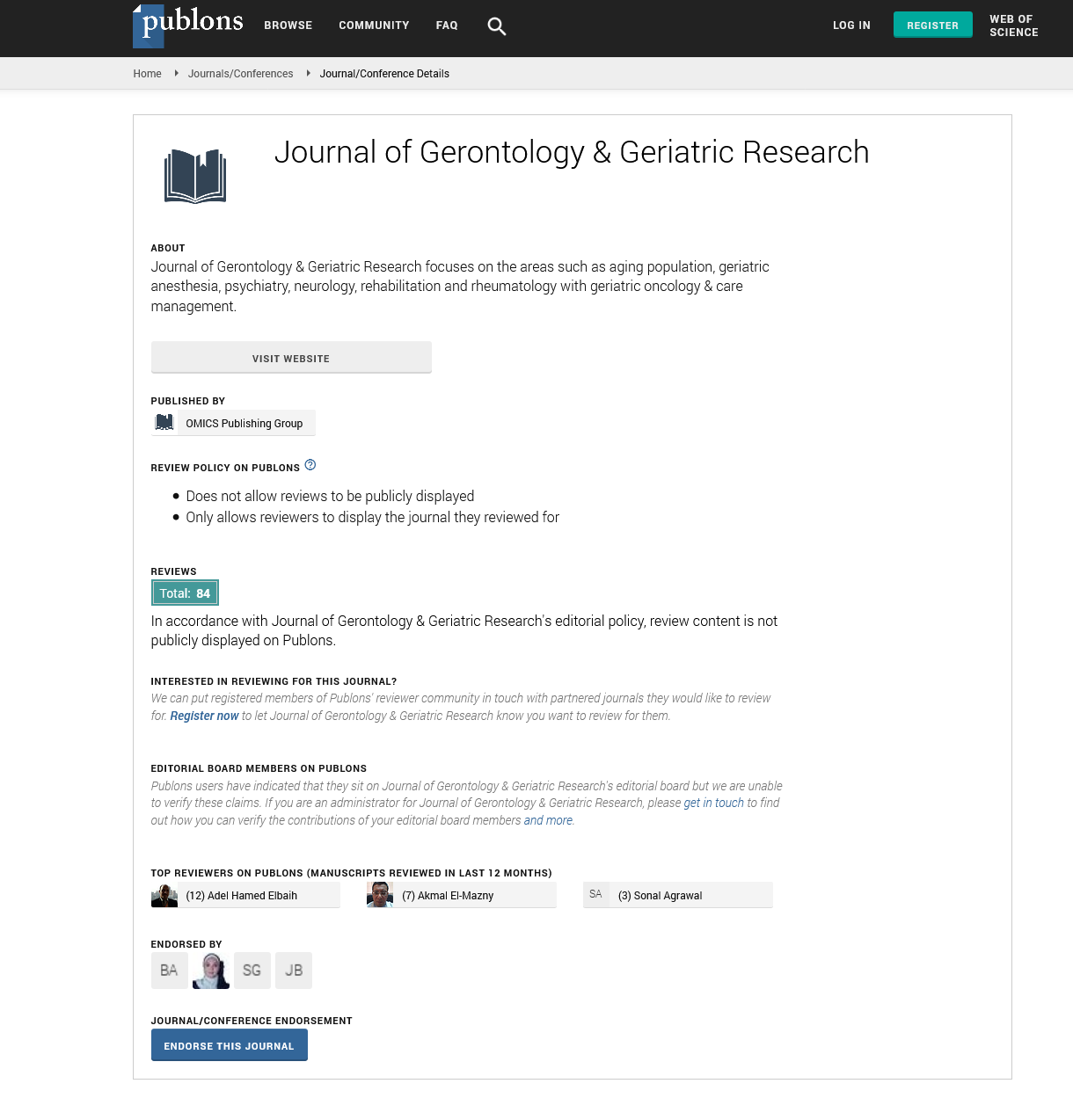Indexed In
- Open J Gate
- Genamics JournalSeek
- SafetyLit
- RefSeek
- Hamdard University
- EBSCO A-Z
- OCLC- WorldCat
- Publons
- Geneva Foundation for Medical Education and Research
- Euro Pub
- Google Scholar
Useful Links
Share This Page
Journal Flyer

Open Access Journals
- Agri and Aquaculture
- Biochemistry
- Bioinformatics & Systems Biology
- Business & Management
- Chemistry
- Clinical Sciences
- Engineering
- Food & Nutrition
- General Science
- Genetics & Molecular Biology
- Immunology & Microbiology
- Medical Sciences
- Neuroscience & Psychology
- Nursing & Health Care
- Pharmaceutical Sciences
A COMPARISON OF EXERCISE MOTIVATION, EXERCISE SELF-DEFINITION AND PHYSICAL ACTIVITY PARTICIPATION AMONG AFRICAN AMERICAN RETIREES LIVING IN INDEPENDENT AND DEPENDENT LIVING SETTINGS
5th International Conference on Geriatric Medicine & Gerontological Nursing
November 14-15, 2016 | Atlanta, USA
George L. Shaw and Miles A. Irvinga
Georgia State University, USA
Accepted Abstracts: J Gerontol Geriat Res
Abstract:
The central aim of this study is to investigate the differences in exercise motivation, self-definition (identity), and physical activity (PA) participation among African Americans (AAs) retirees who resides in either an independent living or dependent living (e.g. assisted living & nursing homes) setting. AAs are more likely to be physically inactive when compared to Whites in America. AAs have an increased risk for developing chronic diseases and increased PA participation could reduce this prevalence (Haskell et al., 2007). Chronic disease, lack of education and motivation are some of the reasons reported in the literature that suggest why African Americans do not get as much exercise as recommended by health care professionals (Go et al., 2014; Haskell et al., 2007; Siddiqi, Tiro, & Shuval, 2011). The investigator will recruit 200 participants between the two groups. Participants will complete the following questionnaires: the Behavioral Regulations Exercise Questionnaire (BREQ-2), the Psychological Needs Satisfaction Exercise Scale (PNSES), the Exercise-Self-Definition Scale (ESDS), the Godin Leisure-Time Exercise Questionnaire (GLTEQ), and a demographic form. Individuals in the dependent living settings will be screened for cognitive impairments using the Saint Louis University Mental Status Exam (SLUMS). The researcher will collect data over a 3-6 month period. Group differences between the settings will be determined using a multiple analysis of covariance (MANCOVA) statistic. A correlation matrix and hierarchical linear regression analysis will be used to determine the strongest predictor(s) of PA participation within each setting.

